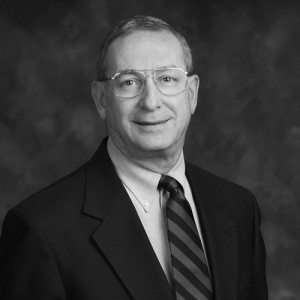
Bernie Becker’s responsibility as Stormont-Vail HealthCare’s chief human resources officer is easily defined, but fulfilling that responsibility is anything but simple. Luckily for his 4,500 employees, Becker’s work is guided by a clear philosophy, a vision that turns that philosophy into a process, an idea of the challenges he’ll face in implementing it, and a keen insight about what innovative HR leadership can produce.
Becker grounds his approach to HR leadership to an understanding of the organization’s mission and its core competencies, and he frames that approach around two questions.
The first assesses the organization’s existing resources: “Do you have the people you can make into the leaders of the future, or do you have a talent deficit that forces you to buy that talent?” The question intentionally distills a complicated, potentially nuanced task into a simple call to action—a make/buy proposition with only two outcomes. It also discards the option of maintaining the status quo while purposefully addressing the future growth of the organization’s human capital.
Only after answering that initial question can he address turning talent into leadership with the second question: “Are you going to internally deliver the needed training and development, or buy those services from the outside and have someone come in to help?” Once more, the idea is to distill a complicated procedure into a simpler call to action—this time focusing on the process involved in answering the first question.
“Do you have the people you can make into the leaders of the future, or do you have a talent deficit that forces you to buy that talent?”
What precedes those questions, says Becker, is an assessment of where the organization is with respect to its mission. Leaders in HR need to understand the mission enough to know the skill sets it requires before performing a reckoning of the skills in place within the organization. Then they can develop existing resources, add new talent, or do both.
Becker makes an important distinction when he broaches the topic of turning talent into leadership: managerial skills and leadership skills are two separate things.
People who know all of the x’s and o’s in the playbook might make great managers, but if they can’t inspire others to apply their talents to the organizational mission, they’re not leaders. Conversely, great leaders need not master every nuance of every position in their charge, so long as they can energize their followers, especially as their work relates to the organizational mission.
At Stormont-Vail, everyone hired or promoted into a managerial position is required to complete a training program called “The Supervisory Toolkit.” Managers, directors, and senior executives also complete “The Leadership Collaborative”—84 hours of leadership education. “Management is about teaching people to get work done,” says Becker. “The Leadership Collaborative is about giving people the ability to motivate and inspire others to do the things that are going to move the organization forward.”
That notion becomes important as he shares his philosophy of healthcare leadership at Stormont-Vail that isn’t exclusively reliant on the executive level for leadership. “You can be a leader without having positional authority,” he says. His vision for the future of healthcare leadership puts physicians in partnership with executives. But first, those physicians need to be trained to lead.
“We’re trying to assess how we impart leadership skills in physicians,” Becker says. “For decades, physicians have been taught that they need to make decisions with a sense of immediacy. It’s part of the diagnostic and treatment processes.” For example, Becker says, the surgeon in the operating room has always been the “captain of the ship.” That’s a problem when his medical authority doesn’t necessarily translate to the best-possible leadership of that room.
Becker sees that history of authoritative immediacy transforming into a more collaborative approach, with physicians learning to lead in those collaborative environments. Becker realized that Stormont-Vail’s internal Leadership Collaborative wasn’t suited for developing leadership skills in physicians, so the system is currently evaluating external approaches to the task.
With core competencies—essential to delivering contemporary healthcare—heading in two divergent paths, maintaining a single position of leadership is becoming increasingly untenable. Going forward, Becker’s view of future healthcare-management structures involves a transition into a dyadic leadership model, to better match essential tasks to core competencies and ultimately deliver better outcomes for patients.
“In the service line of how care is delivered, you’re going to have an administrative leader and a physician leader working hand-in-hand in directing all of the people and processes involved in that service line,” says Becker.
Having two leaders of that team—a physician representing the medical mission of the team and an administrative leader representing the managerial side—with knowledge of the other’s needs and objectives will lead to cheaper, faster, and better medical outcomes. Right now, says Becker, most organizations have the management role in place, but they lack a physician leader.
By Becker’s estimate, installing a dyadic leadership model to Stormont-Vail’s healthcare delivery teams will require about 50 doctors with leadership skills. Once those leadership-trained doctors are in place, his vision will have helped Stormont-Vail maximize the value of both traditional management structures and innovative leadership training among physicians.

